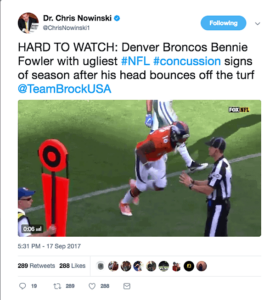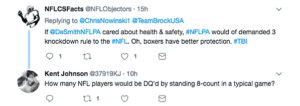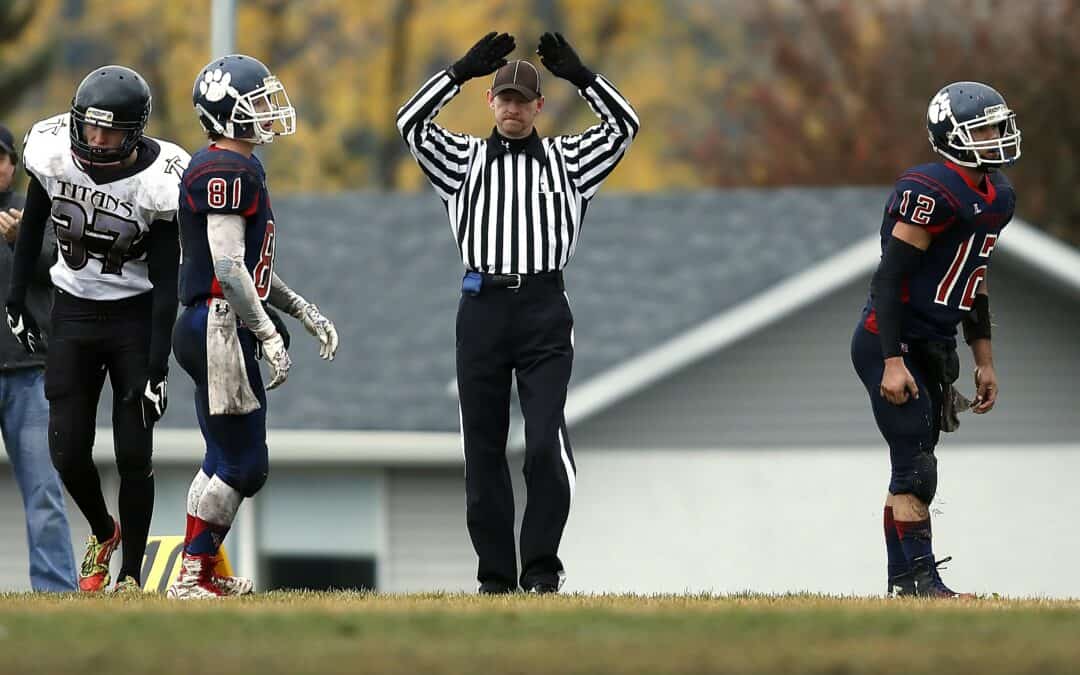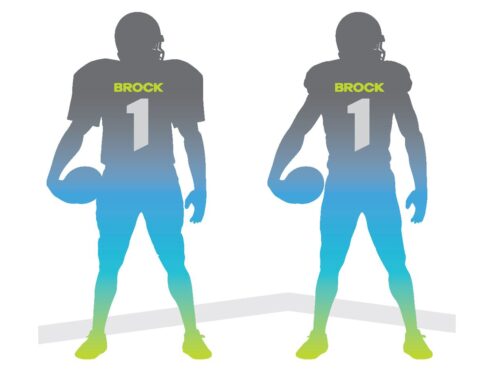Bennie Fowler of the Denver Broncos dove into the end zone in an attempt to catch a pass and came down hard on the turf. Seconds later Fowler got up and tried running back to the huddle only to lose his balance and fall back down. This play was immediately spotted by Dr. Chris Nowinski, President of the Concussion Legacy Foundation, and he commented on the severity of the injury and mentioned Brock.

“This is why we do what we do,” said Dan Sawyer, CEO of Brock USA. “It’s not just in the NFL. People need to realize that, yes, this is where the focus and attention is placed, but the field is the one piece of safety equipment that all these athletes use. Whether it’s soccer, football, field hockey, baseball, pros or youth, the field is a major factor when it comes to sports concussions.”
Fowler did leave the game with a concussion, but he wasn’t the only player to leap into the air only to have a direct head-to-turf collision. Jeremy Hill, running back for the Cincinnati Bengals, dove over the mass of bodies at the line of scrimmage only to be upended and land directly on his head. The ball came loose from the awkward way his body contorted when it met the turf, and that’s where the commentary chose to stay – “was it a fumble or not?” Not, whether or not Hill had suffered a concussion.
Nowinski’s tweet during the game fanned the flames of the controversy surrounding the NFL and head injuries. Many people retweeted or liked the post, but the comments were divided. Some cringed at the violence of the play, others trumpeted arguments claiming concussions are part of the game.
“I guess in the perfect world, we all just stay bubble wrapped in our rooms so nobody gets hurt,” responded @goggins_matt.

“I just watched 2 drunks butt heads and knock each other out we should ban everything god help us,” commented @gkillo2.

This type of injury dismissal has clouded the conversation and stalled progress in all sports in regards to changes necessary to prevent or lessen the impact of sub-concussive blows and concussions. One tweet that stood out from the chatter was from Kent Johnson, “How many NFL players would be DQ’d by standing 8-count in a typical game?”

The “Standing-8 Count” rule references the authority given to boxing officials to deem a boxer unable to continue in a fight resulting in a “Technical Knockout” or “TKO.” This is something many leagues have not implemented for turf sports even though many of the classic symptoms of boxers can be seen on rugby and football fields. Players suffering major blows then stumbling or having a dazed expression from brain trauma can be directly compared to a boxer feeling a major right hook. A soccer or football player may not be “punch drunk,” but their bodies are feeling the same symptoms.
Giving authority to league officials to declare a player unfit to continue in a game may receive major pushback due to several factors. A team whose player is deemed unfit may claim bias against the officials for forcing a star player to sit. Or the opposite may occur where an official allows a concussed player to continue playing and the player does significantly more damage in subsequent plays. The rules for giving officiants the authority to declare players unfit to continue would have to be thoroughly vetted and officials would then have to undergo significant training to be able to recognize symptoms and diagnose players, but this rule change would take the onus off the team’s doctors and athletic trainers and put the call on an unbiased third party.






